Jan 18, 2024Find the experimental probability for every item in the dataset using the relative frequency formula. It may be helpful to build a relative frequency table. Add the relative frequencies of previous data points to the relative frequency of the current item. The cumulative relative frequency of the last entry should be equal to 1.0. It means that
SECTION 2.2 histogram,frequency, relative frequency , class width Flashcards | Quizlet
Relative frequency = Number of positive trial/Total Number of trials. f = 6/40 = 0.15. Hence, the relative frequency of observing the die land on the number 4 is 0.15. Example 2: A coin is tossed 20 times and lands 15 time on heads.
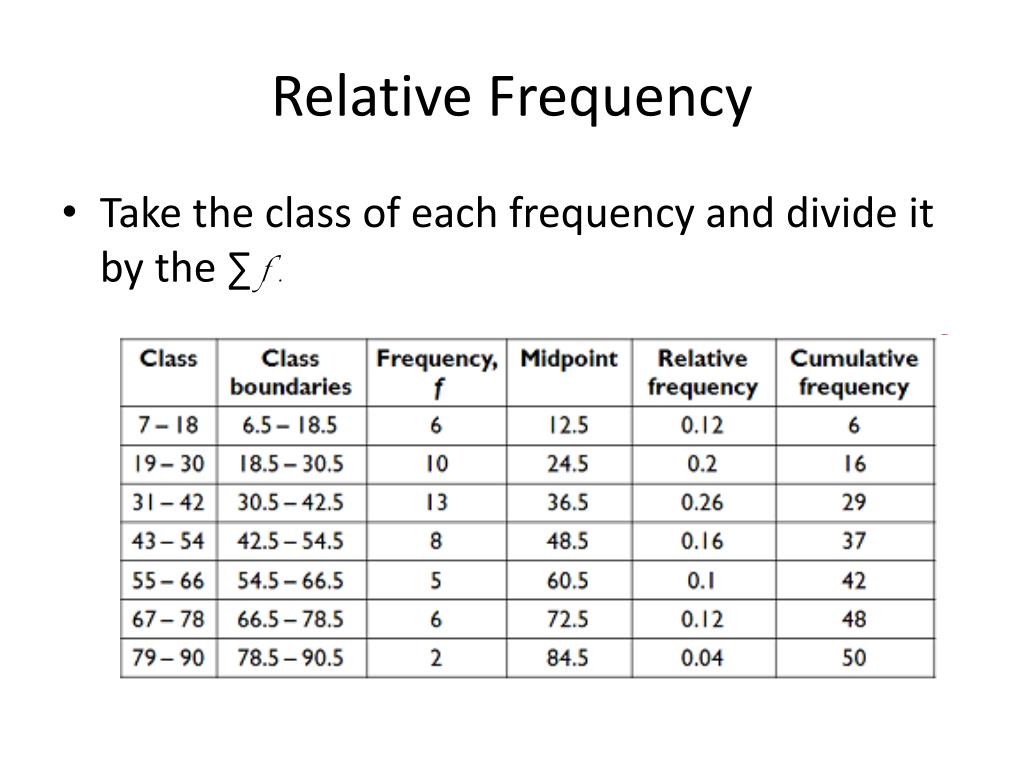
Source Image: slideserve.com
Download Image
To determine the relative frequency for each class we first add the total number of data points: 7 + 9 + 18 + 12 + 4 = 50. Next we, divide each frequency by this sum 50. 0.14 = 14% students with an F. 0.18 = 18% students with a D. 0.36 = 36% students with a C. 0.24 = 24% students with a B.

Source Image: chegg.com
Download Image
Relative Frequency | Definition & Examples – Video & Lesson Transcript | Study.com
The relative frequency of a data class is the percentage of data elements in that class. The relative frequency can be calculated using the formula f i = f n f i = f n, where f f is the absolute frequency and n n is the sum of all frequencies. f i = f n f i = f n n n is the sum of all frequencies.
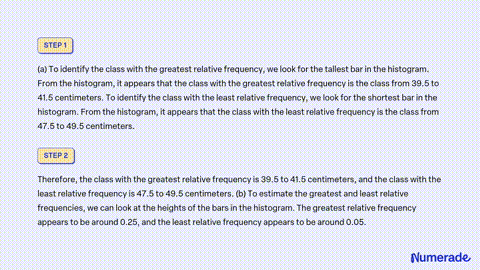
Source Image: numerade.com
Download Image
The Class With The Greatest Relative Frequency Is
The relative frequency of a data class is the percentage of data elements in that class. The relative frequency can be calculated using the formula f i = f n f i = f n, where f f is the absolute frequency and n n is the sum of all frequencies. f i = f n f i = f n n n is the sum of all frequencies.
Statistics and Probability Comments (1) Answer & Explanation Solved by verified expert Answered by russelsp on coursehero.com A. B. The class with the greatest frequency is from 40 to 118. C. The class with the least frequency is from 277 to 355. Step-by-step explanation A. Arrange the data in ascending order.
SOLVED: Use the frequency histogram to complete the following parts. (a) Identify the class with the greatest relative frequency. (b) Identify the class with the least relative frequency. (c) Estimate the greatest
In a relative frequency distribution, the number assigned to this class would be 0.25 (50/200). In other words, that’s 25 percent of the total. Here’s a handy formula for calculating the relative frequency of a class:
SECTION 2.2 histogram,frequency, relative frequency , class width Flashcards | Quizlet

Source Image: quizlet.com
Download Image
Solved The data represent the time, in minutes, spent | Chegg.com
In a relative frequency distribution, the number assigned to this class would be 0.25 (50/200). In other words, that’s 25 percent of the total. Here’s a handy formula for calculating the relative frequency of a class:

Source Image: chegg.com
Download Image
SECTION 2.2 histogram,frequency, relative frequency , class width Flashcards | Quizlet
Jan 18, 2024Find the experimental probability for every item in the dataset using the relative frequency formula. It may be helpful to build a relative frequency table. Add the relative frequencies of previous data points to the relative frequency of the current item. The cumulative relative frequency of the last entry should be equal to 1.0. It means that

Source Image: quizlet.com
Download Image
Relative Frequency | Definition & Examples – Video & Lesson Transcript | Study.com
To determine the relative frequency for each class we first add the total number of data points: 7 + 9 + 18 + 12 + 4 = 50. Next we, divide each frequency by this sum 50. 0.14 = 14% students with an F. 0.18 = 18% students with a D. 0.36 = 36% students with a C. 0.24 = 24% students with a B.

Source Image: study.com
Download Image
Creating histograms with Google Sheets
Similar to a frequency histogram, this type of histogram displays the classes along the x-axis of the graph and uses bars to represent the relative frequencies of each class along the y-axis. The only difference is the labels used on the y-axis. Instead of displaying raw frequencies, a relative frequency histogram displays percentages.
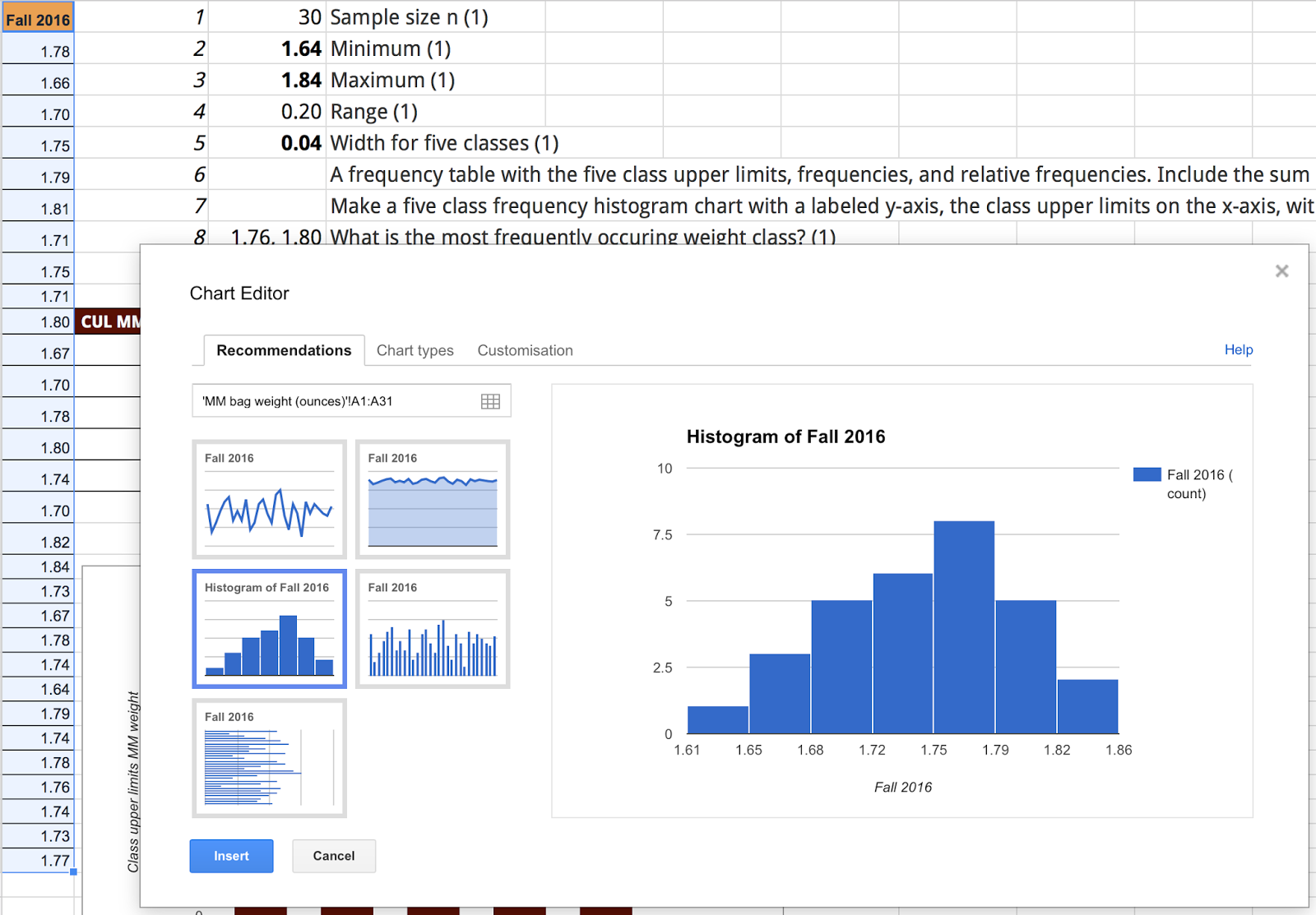
Source Image: danaleeling.blogspot.com
Download Image
SOLVED: Text: Use the frequency histogram to complete the following parts. Identify the class with the greatest and the class with the least relative frequency. Estimate the greatest and least relative frequencies.
The relative frequency of a data class is the percentage of data elements in that class. The relative frequency can be calculated using the formula f i = f n f i = f n, where f f is the absolute frequency and n n is the sum of all frequencies. f i = f n f i = f n n n is the sum of all frequencies.
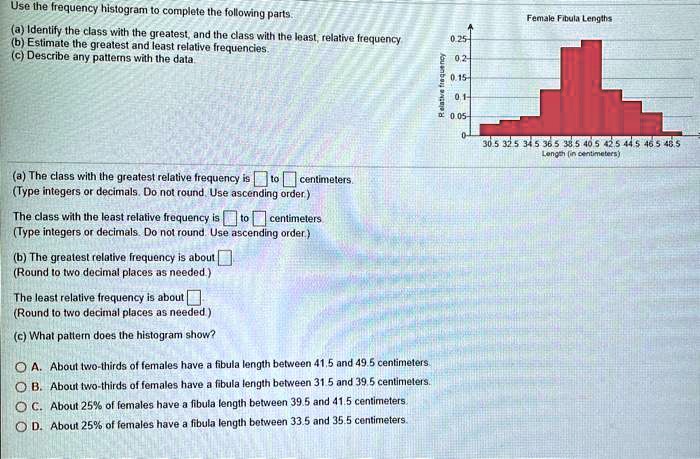
Source Image: numerade.com
Download Image
⏩SOLVED:Construct a frequency distribution for the data set using… | Numerade
Statistics and Probability Comments (1) Answer & Explanation Solved by verified expert Answered by russelsp on coursehero.com A. B. The class with the greatest frequency is from 40 to 118. C. The class with the least frequency is from 277 to 355. Step-by-step explanation A. Arrange the data in ascending order.
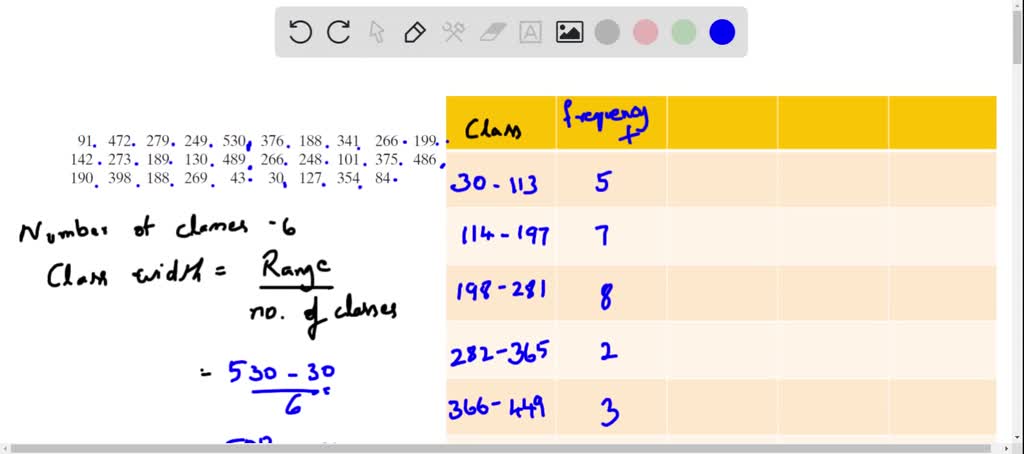
Source Image: numerade.com
Download Image
Solved The data represent the time, in minutes, spent | Chegg.com
⏩SOLVED:Construct a frequency distribution for the data set using… | Numerade
Relative frequency = Number of positive trial/Total Number of trials. f = 6/40 = 0.15. Hence, the relative frequency of observing the die land on the number 4 is 0.15. Example 2: A coin is tossed 20 times and lands 15 time on heads.
Relative Frequency | Definition & Examples – Video & Lesson Transcript | Study.com SOLVED: Text: Use the frequency histogram to complete the following parts. Identify the class with the greatest and the class with the least relative frequency. Estimate the greatest and least relative frequencies.
Similar to a frequency histogram, this type of histogram displays the classes along the x-axis of the graph and uses bars to represent the relative frequencies of each class along the y-axis. The only difference is the labels used on the y-axis. Instead of displaying raw frequencies, a relative frequency histogram displays percentages.